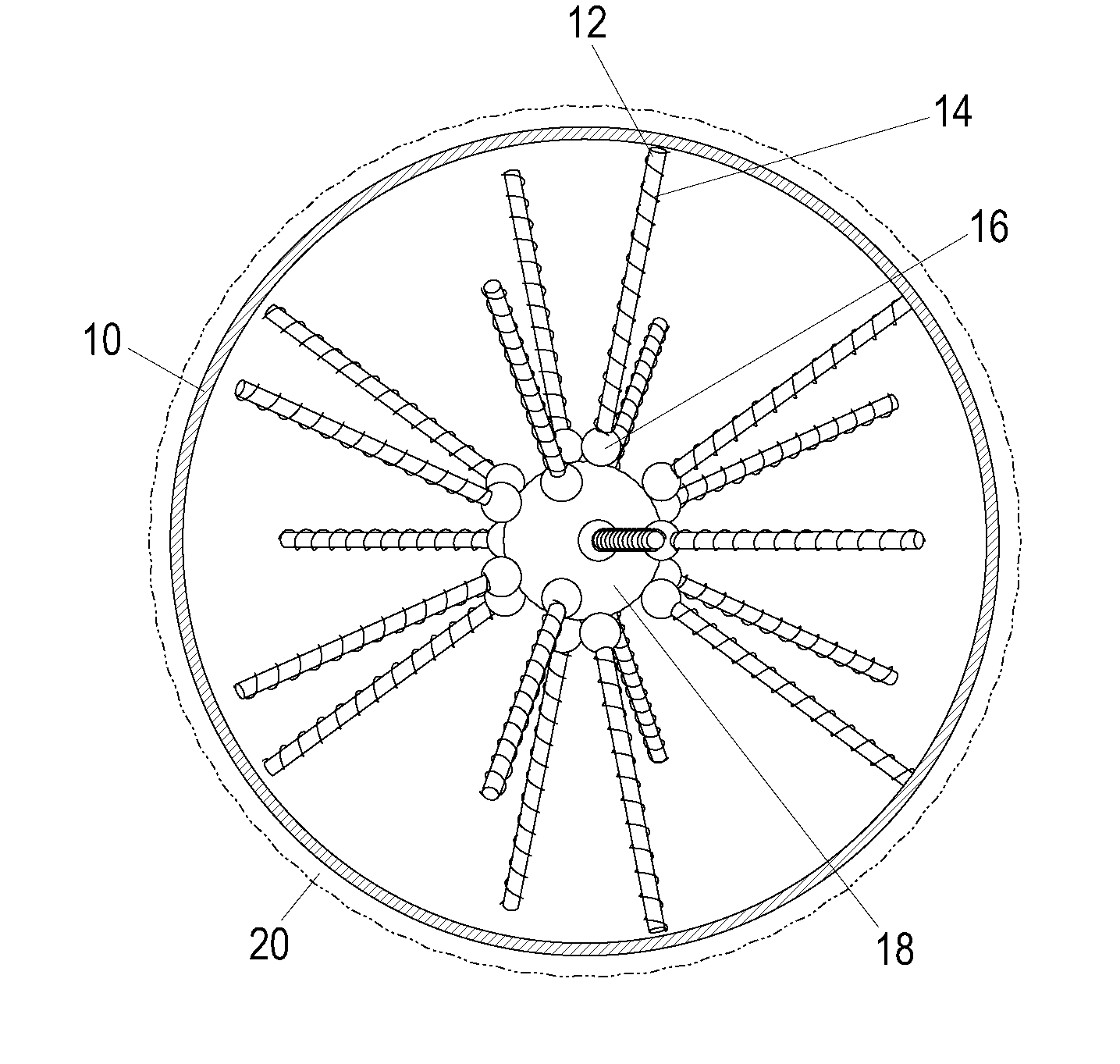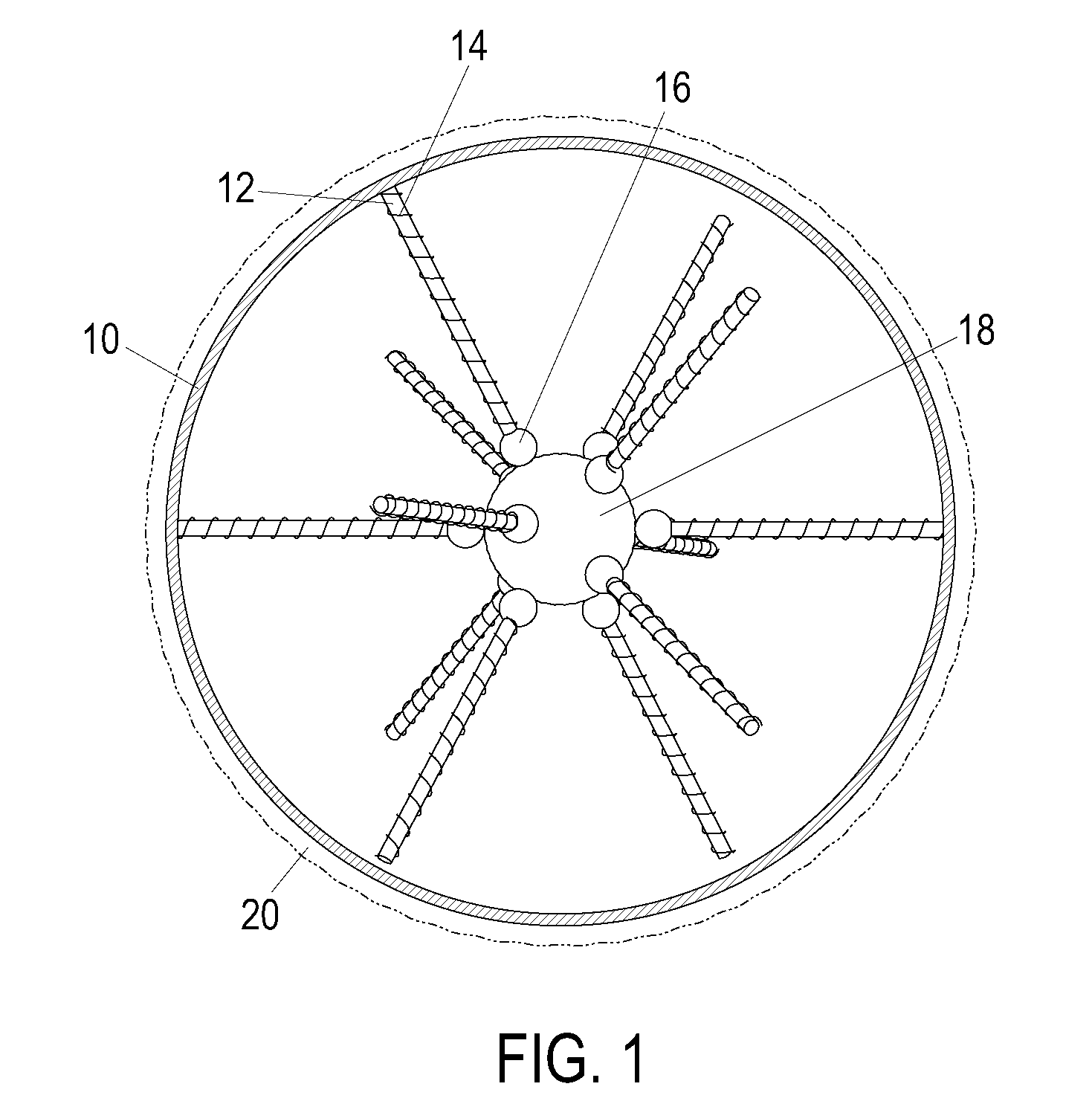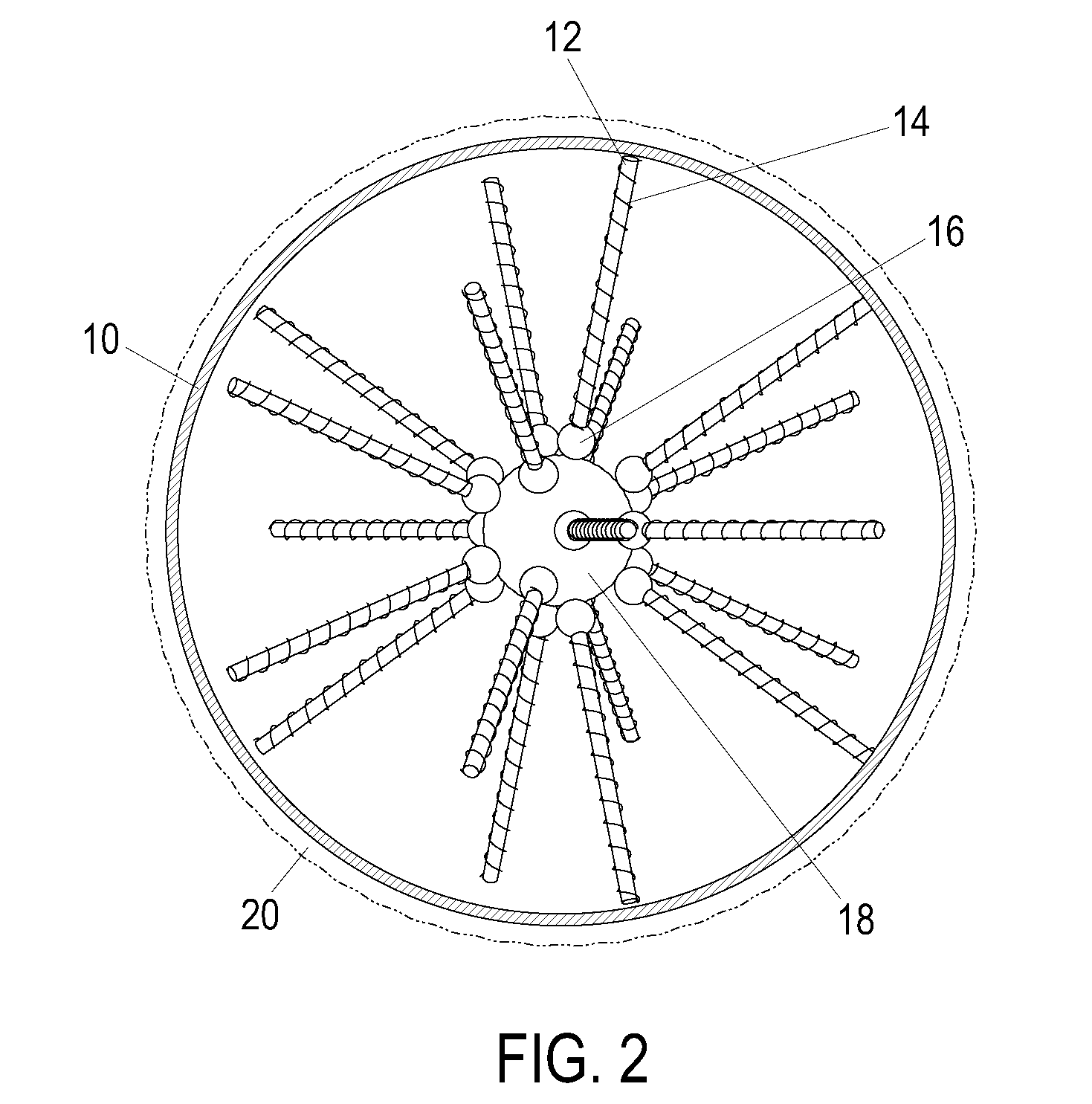Ball Apparatus Having Adaptive Rotational Inertia
a technology of rotational inertia and ball apparatus, which is applied in the field of new ball apparatus, can solve the problems of insufficient practical significance in many applications, insufficient internal structure, and inability to achieve the effect of reducing spin rate, increasing moment of inertia, and reducing spin ra
- Summary
- Abstract
- Description
- Claims
- Application Information
AI Technical Summary
Benefits of technology
Problems solved by technology
Method used
Image
Examples
Embodiment Construction
[0037] To ensure the golf ball spins and rolls smoothly, and as well pass the USGA symmetry test in the disclosed golf ball embodiment of the present invention, it is important that the weight members (configured preferably as beads) are distributed as uniformly as possible. With reference to well-known mathematical concepts, if the (discrete set of) beads were to be uniformly distributed on the surface of a sphere, these beads can be viewed as vertices of a polyhedron. To achieve a uniform distribution, “regular polyhedrons” (i.e. the faces are also regular polygons, such as equilateral triangles, squares or regular pentagons) are first considered. As a mathematical fact, there are only five of them, which are sometimes called the “Platonic solids”. They are: the regular tetrahedron (4 vertices, 4 triangular faces), octahedron (6 vertices, 8 triangular faces), hexahedron (a.k.a. cube, 8 vertices, 6 square faces), icosahedron (12 vertices, 20 triangular faces), and dodecahedron (20 ...
PUM
 Login to View More
Login to View More Abstract
Description
Claims
Application Information
 Login to View More
Login to View More - R&D
- Intellectual Property
- Life Sciences
- Materials
- Tech Scout
- Unparalleled Data Quality
- Higher Quality Content
- 60% Fewer Hallucinations
Browse by: Latest US Patents, China's latest patents, Technical Efficacy Thesaurus, Application Domain, Technology Topic, Popular Technical Reports.
© 2025 PatSnap. All rights reserved.Legal|Privacy policy|Modern Slavery Act Transparency Statement|Sitemap|About US| Contact US: help@patsnap.com



